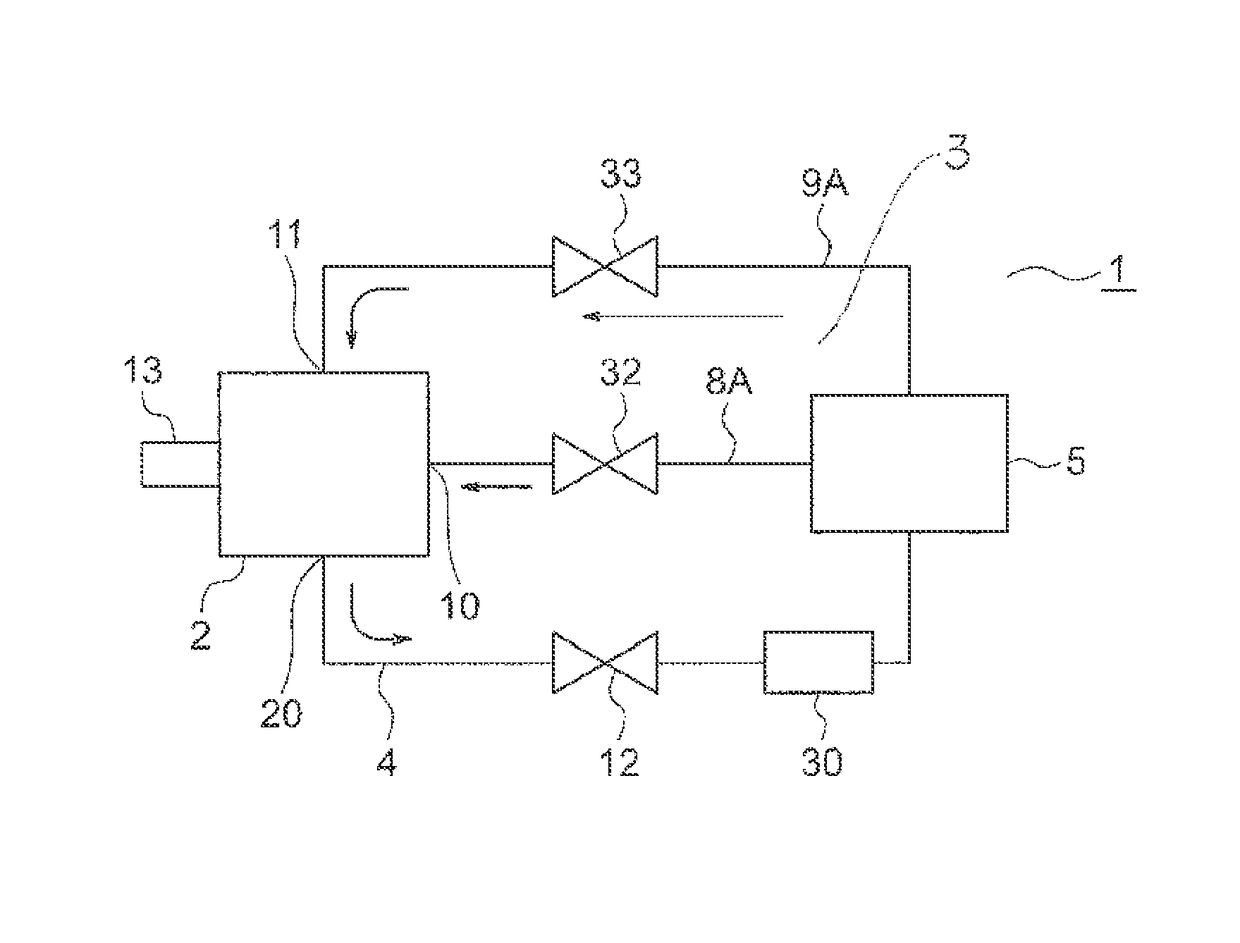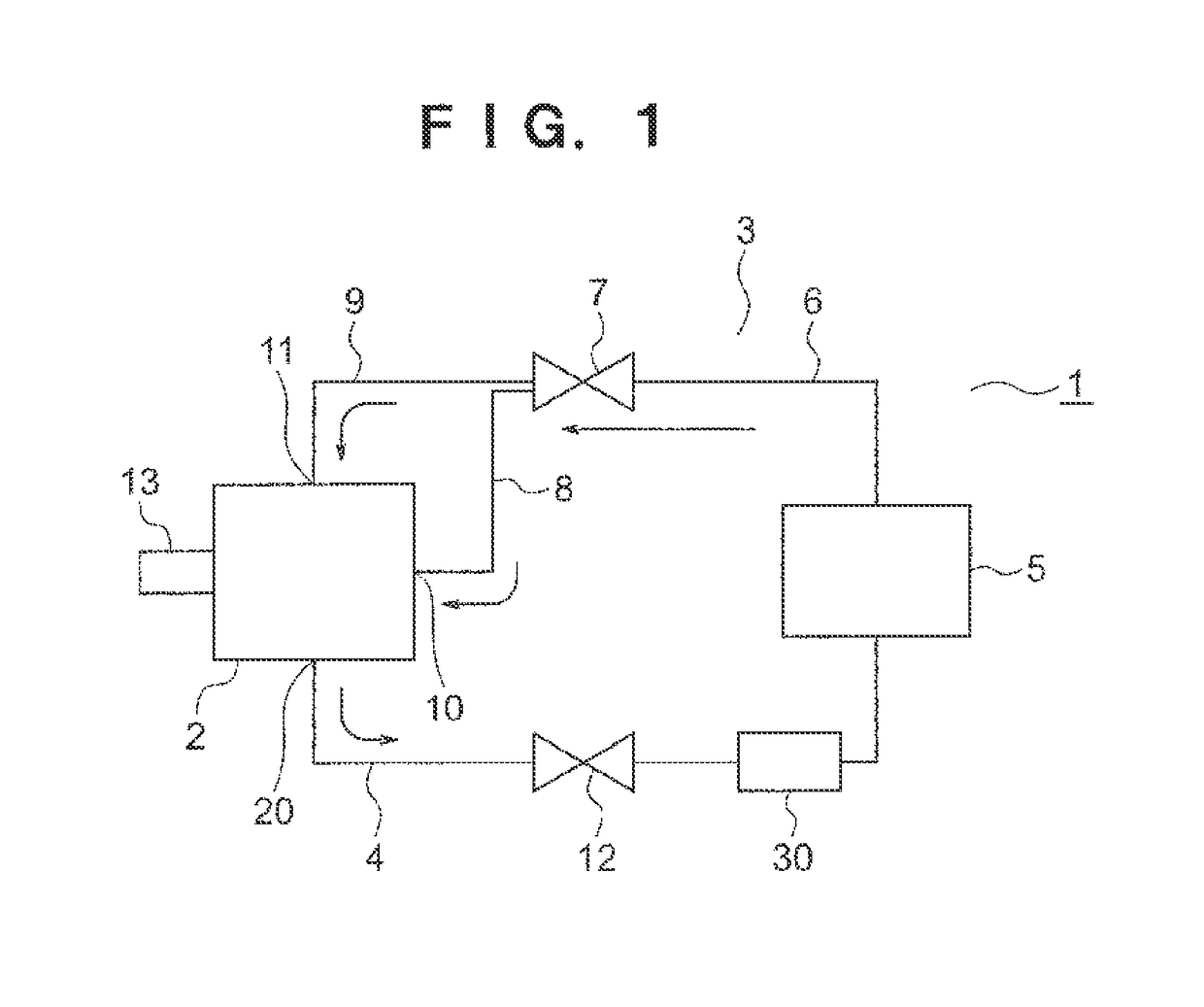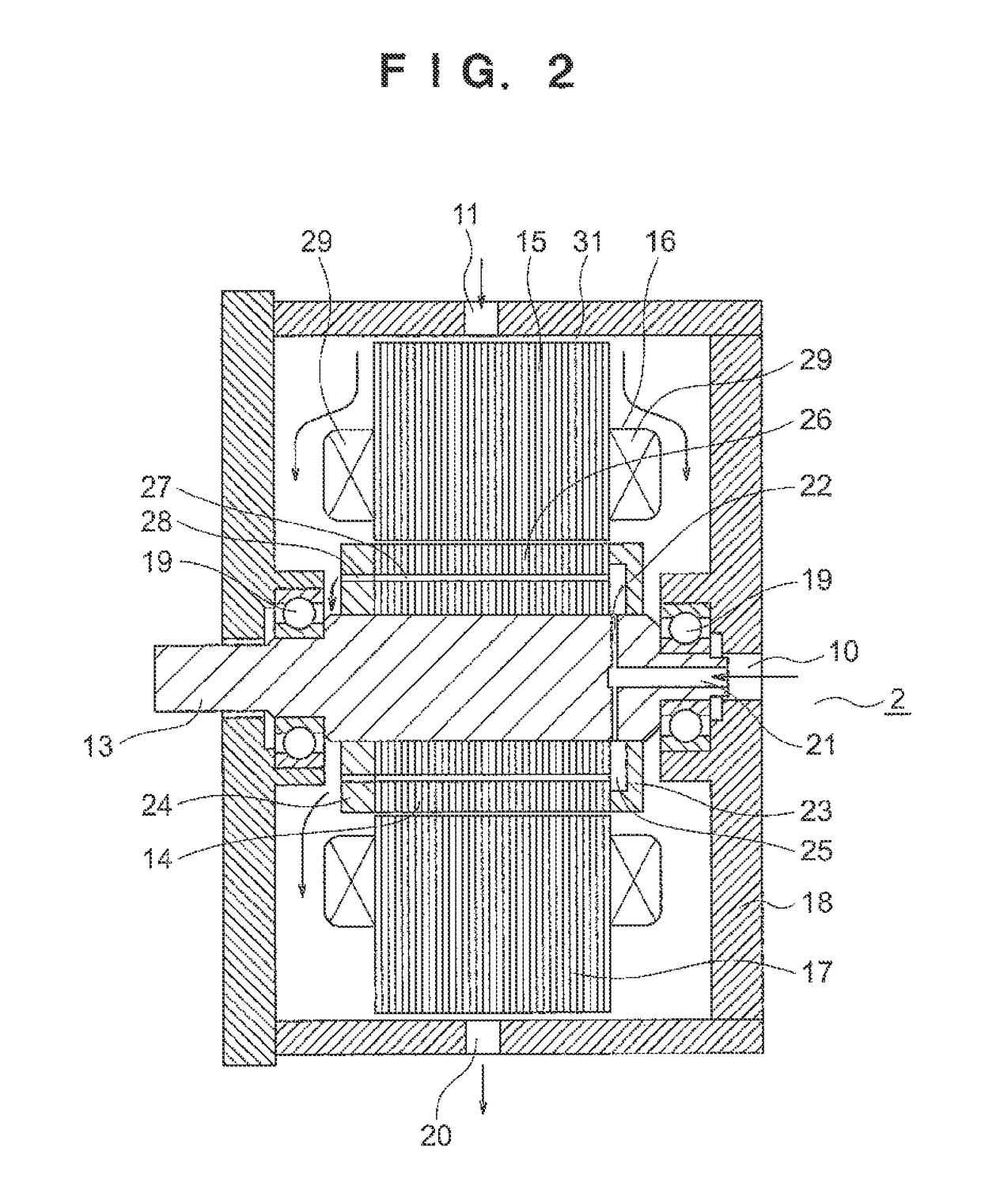Rotating electric machine and method of operating the same
a technology of rotating electric machines and rotating parts, which is applied in the direction of rotating parts of magnetic circuits, magnetic circuit shapes/forms/construction, transportation and packaging, etc., can solve the problem of low overall cooling efficiency and achieve efficient cooling and overall cooling efficiency improvement
- Summary
- Abstract
- Description
- Claims
- Application Information
AI Technical Summary
Benefits of technology
Problems solved by technology
Method used
Image
Examples
first embodiment
[0029
[0030]FIG. 1 is a coolant circuit diagram of an electric motor 1 which is a rotating electric machine according to a first embodiment of the present invention.
[0031]The electric motor 1, which is to be mounted in an automobile, includes an electric motor main body 2 which is a rotating electric machine main body, a pump 5, an outgoing pipe 3, and a return pipe 4. The electric motor main body 2 and the pump 5 are connected to each other through the outgoing pipe 3 and the return pipe 4.
[0032]The outgoing pipe 3 includes a pipe main body 6. The pipe main body 6 has one end portion connected to the pump 5 and another end portion to which a three-way valve 7 is mounted. On a downstream side of the three-way valve 7, a first outgoing pipe portion 8 and a second outgoing pipe portion 9 branch from the pipe main body 6. A distal end portion of the first outgoing pipe portion 8 is connected to a first coolant inflow port 10 of the electric motor main body 2. A distal end portion of the...
second embodiment
[0068
[0069]FIG. 4 is a coolant circuit diagram of an electric motor 1 according to a second embodiment of the present invention.
[0070]In the second embodiment, the outgoing pipe 3 includes a first outgoing pipe portion 8A and a second outgoing pipe portion 9A. The first outgoing pipe portion 8A has one end portion connected to the pump 5 and another end portion connected to the first coolant inflow port 10 of the electric motor main body 2. The second outgoing pipe portion 9A has one end portion connected to the pump 5 and another end portion connected to the second coolant inflow port 11 of the electric motor main body 2.
[0071]A first two-way valve 32 is mounted to a middle portion of the first outgoing pipe portion 8A, whereas a second two-way valve 33 is mounted to a middle portion of the second outgoing pipe portion 9A.
[0072]The remaining configuration is the same as that of the electric motor 1 according to the first embodiment.
[0073]In the electric motor 1 according to the fir...
PUM
 Login to View More
Login to View More Abstract
Description
Claims
Application Information
 Login to View More
Login to View More - R&D
- Intellectual Property
- Life Sciences
- Materials
- Tech Scout
- Unparalleled Data Quality
- Higher Quality Content
- 60% Fewer Hallucinations
Browse by: Latest US Patents, China's latest patents, Technical Efficacy Thesaurus, Application Domain, Technology Topic, Popular Technical Reports.
© 2025 PatSnap. All rights reserved.Legal|Privacy policy|Modern Slavery Act Transparency Statement|Sitemap|About US| Contact US: help@patsnap.com



